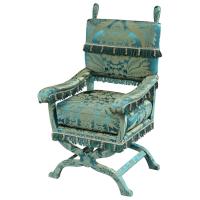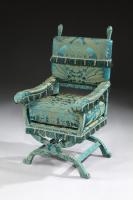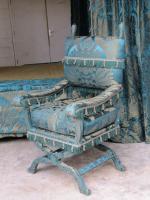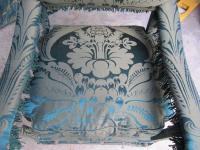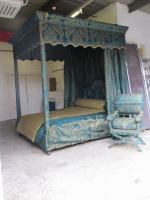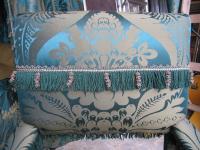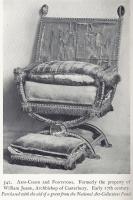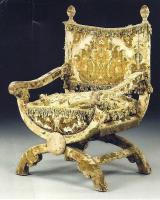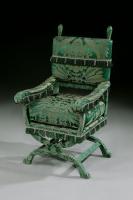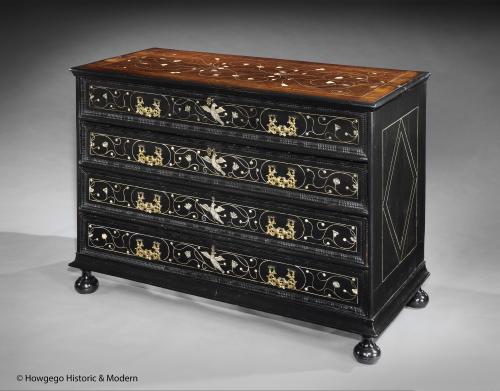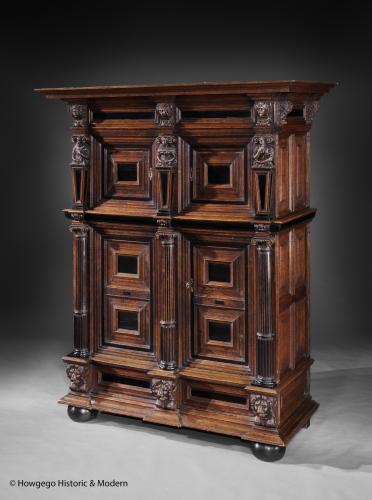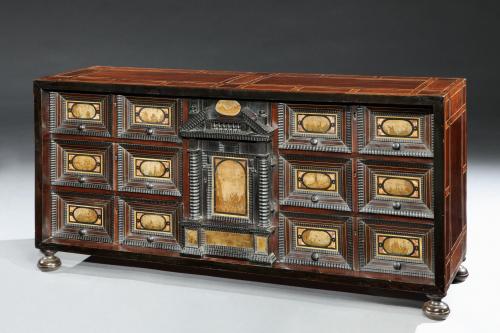
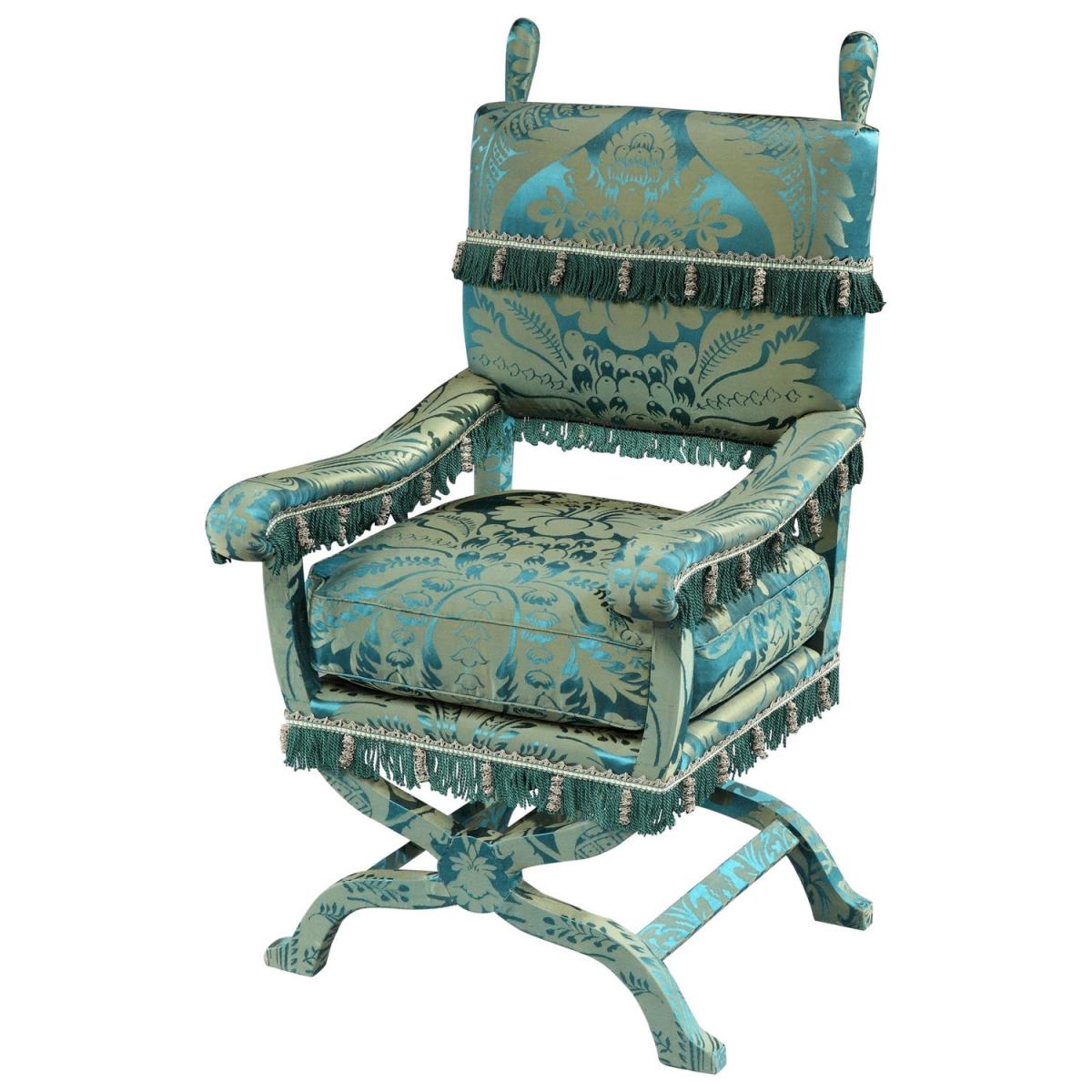
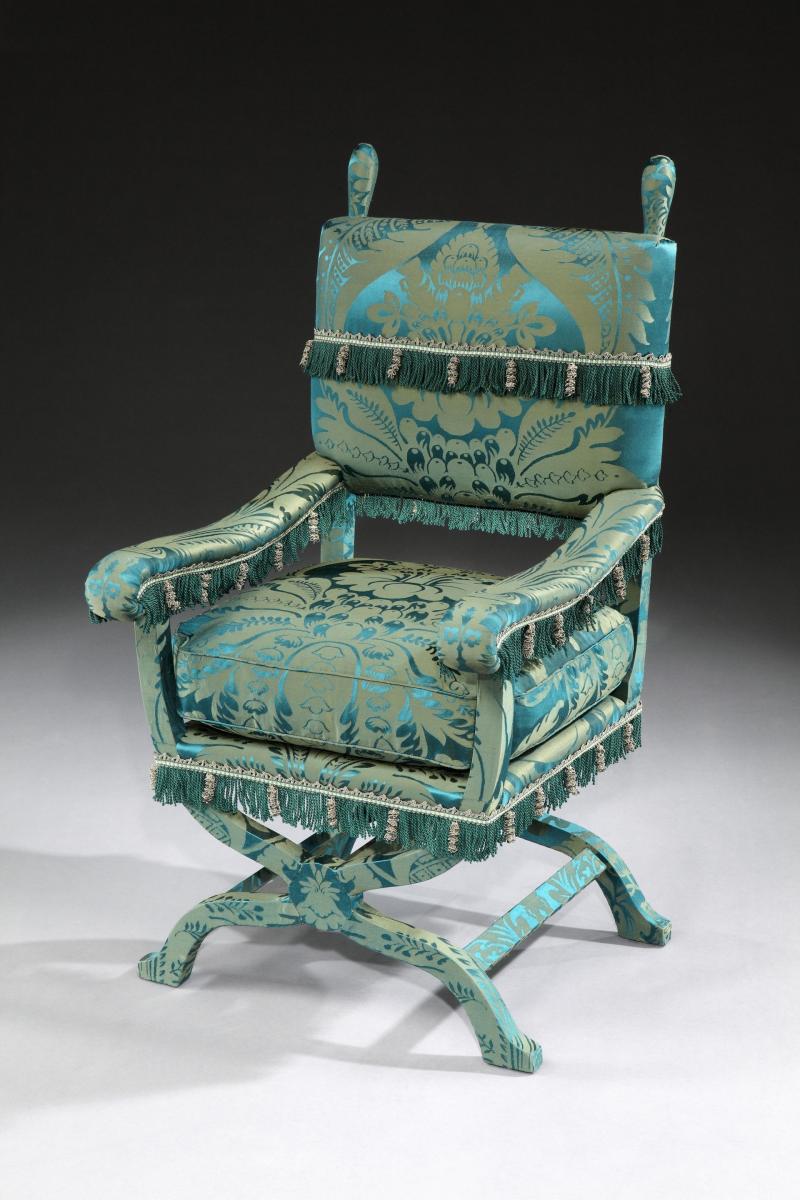
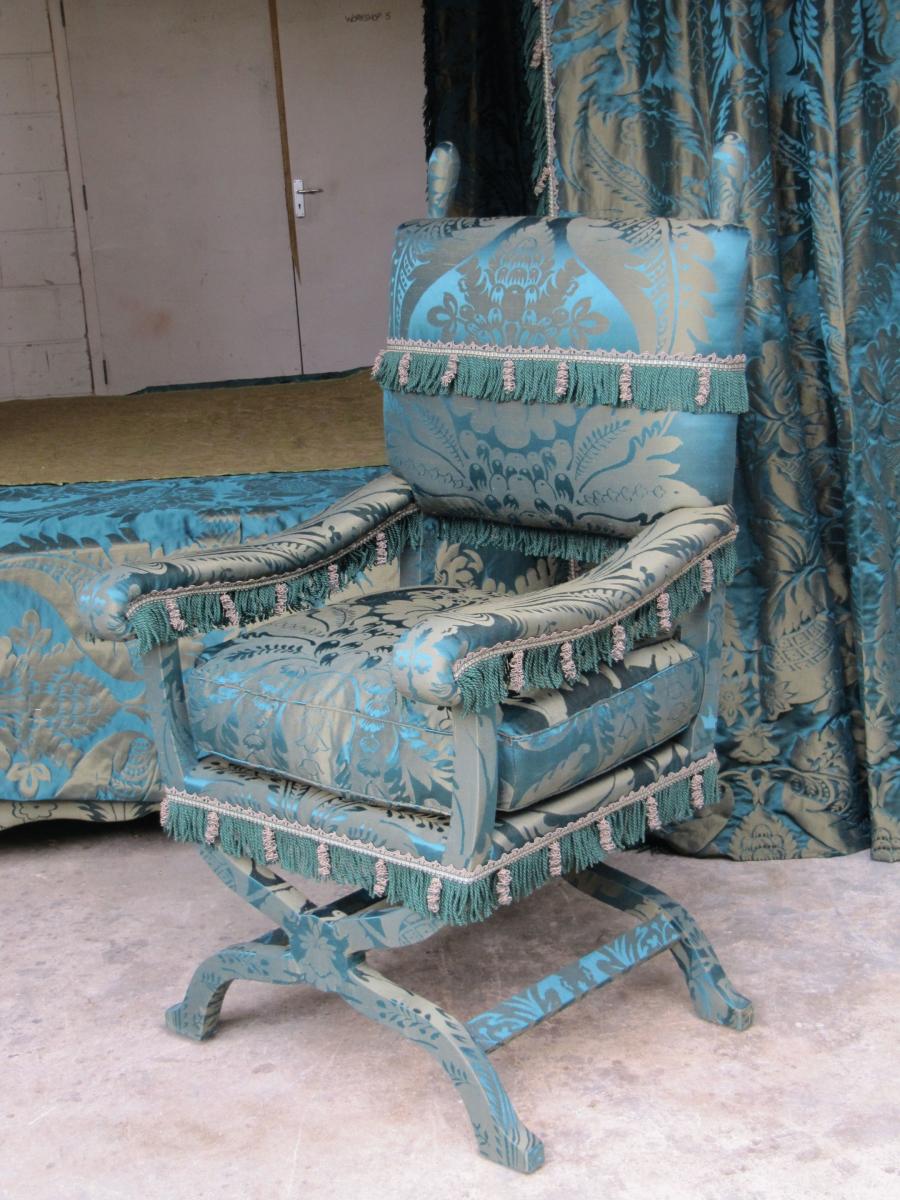
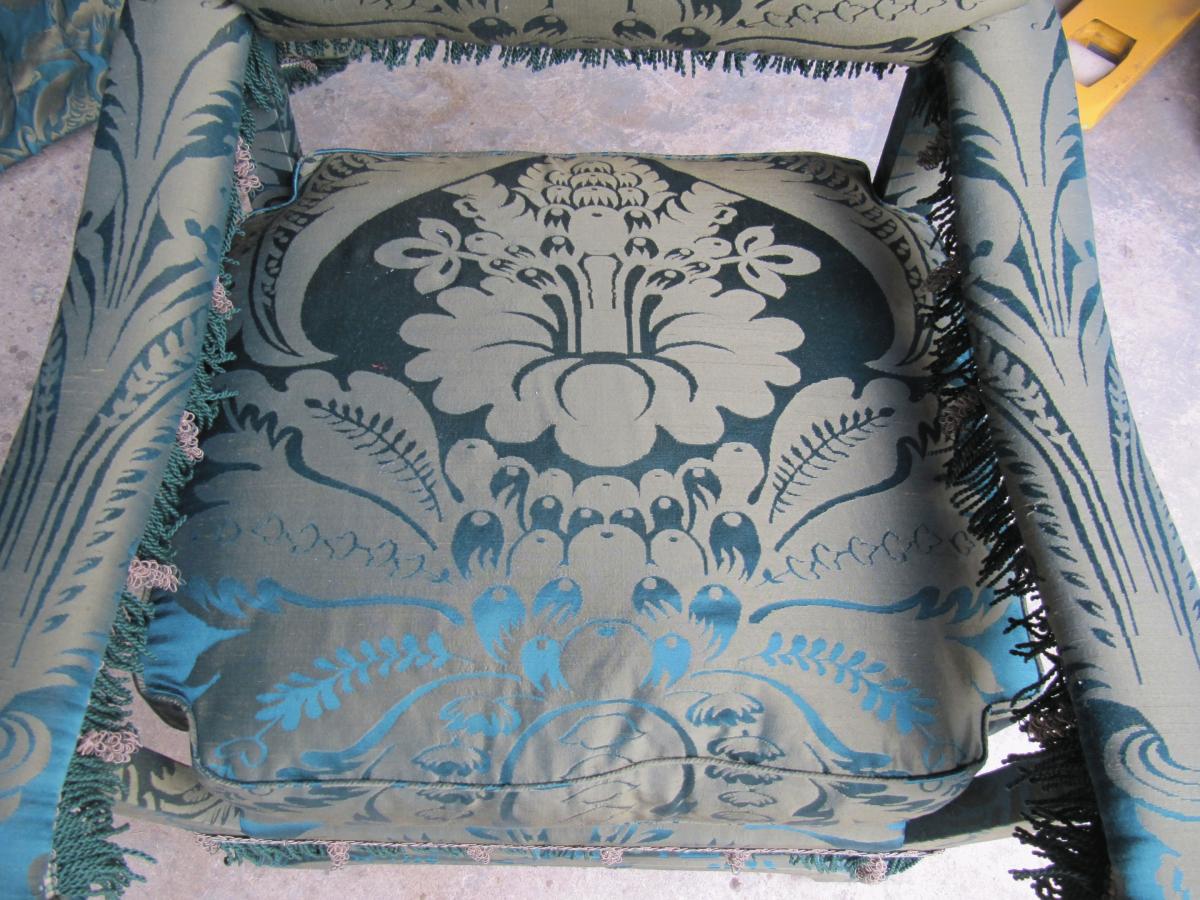
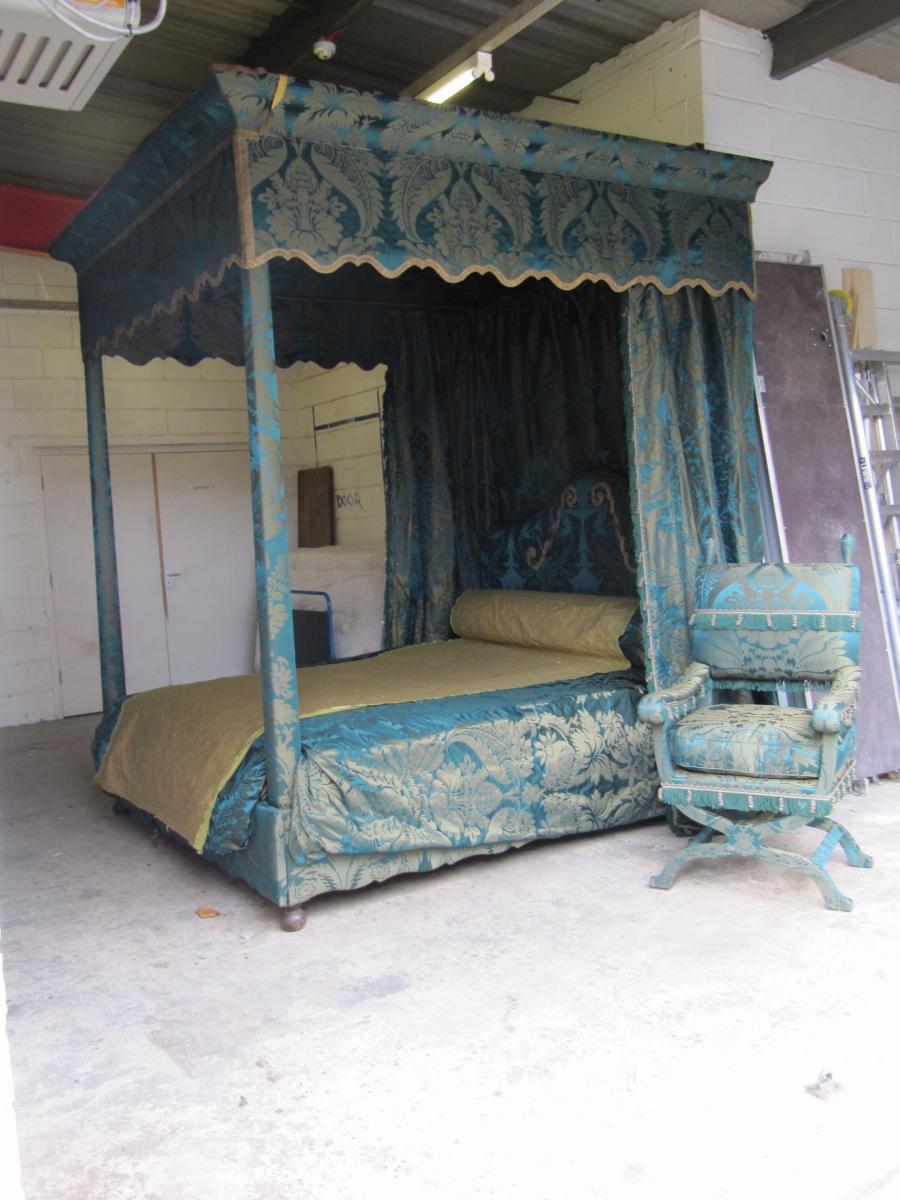
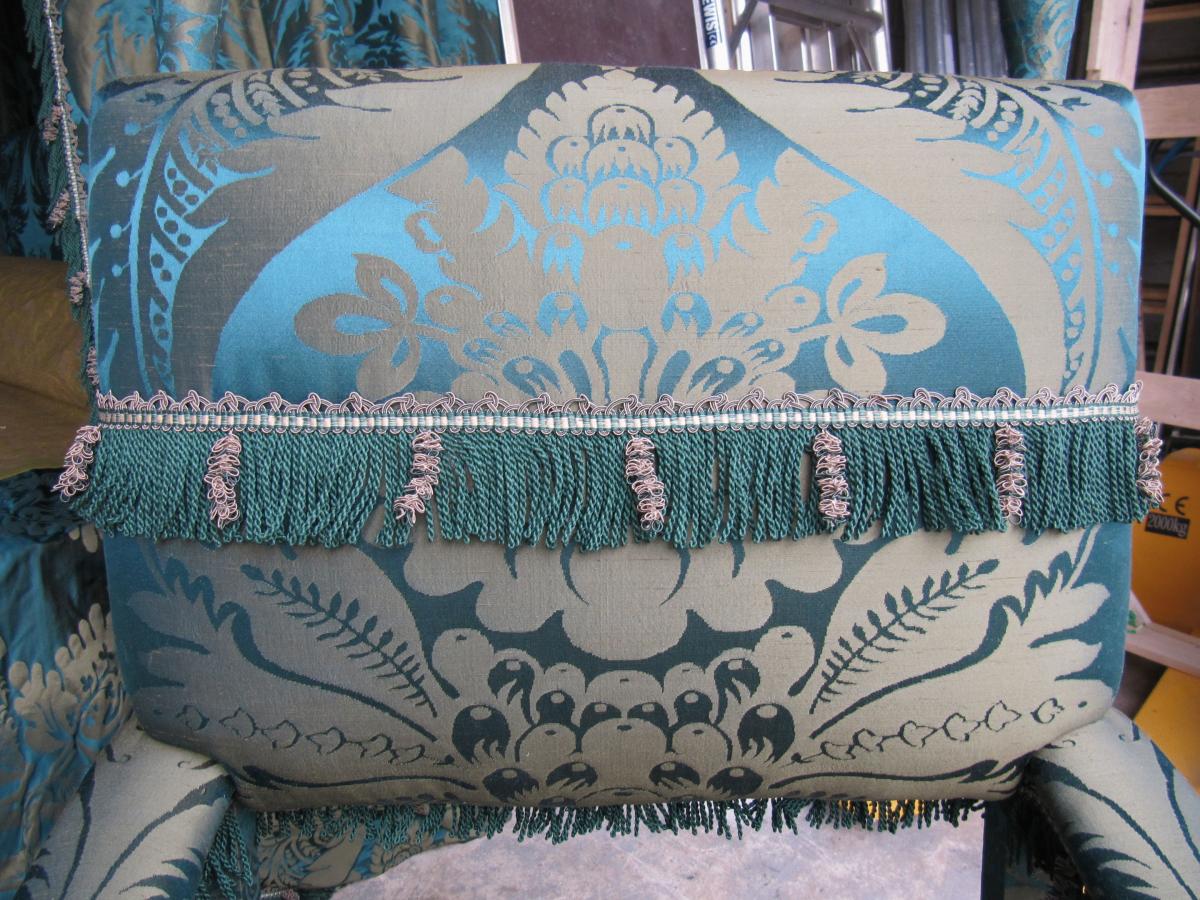
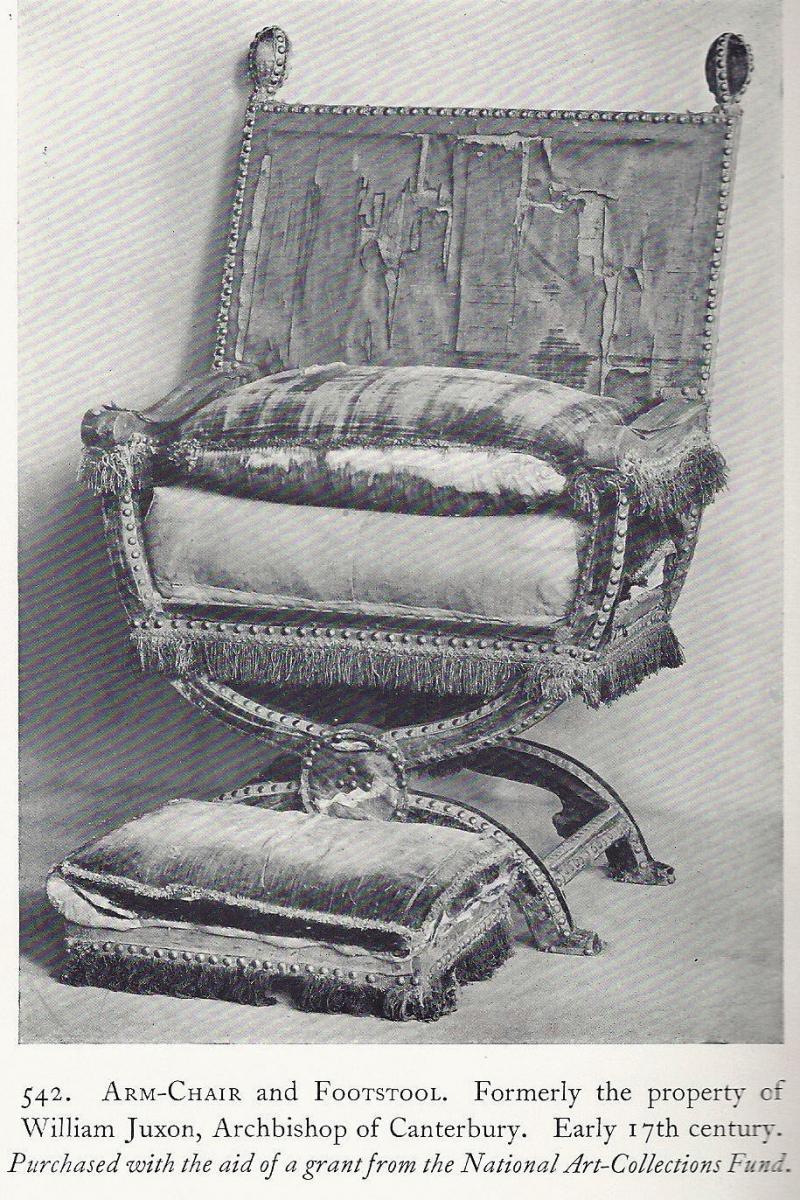
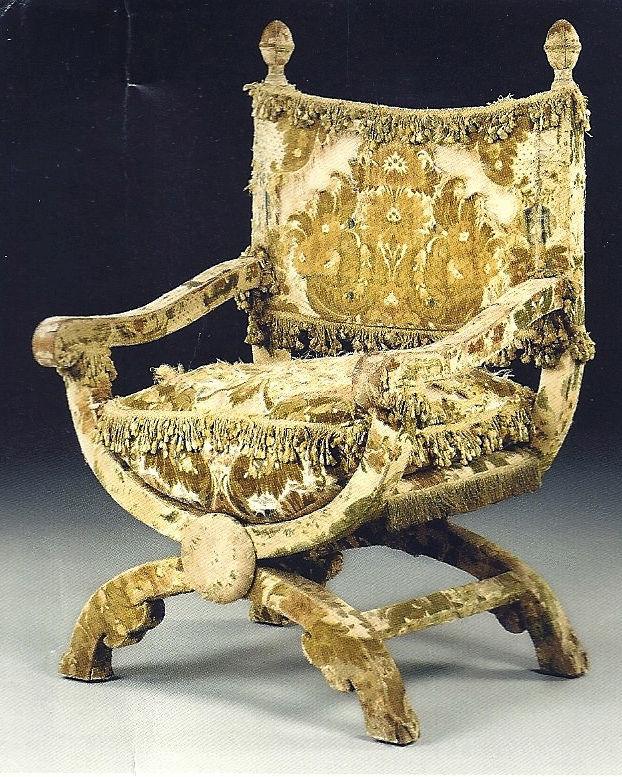
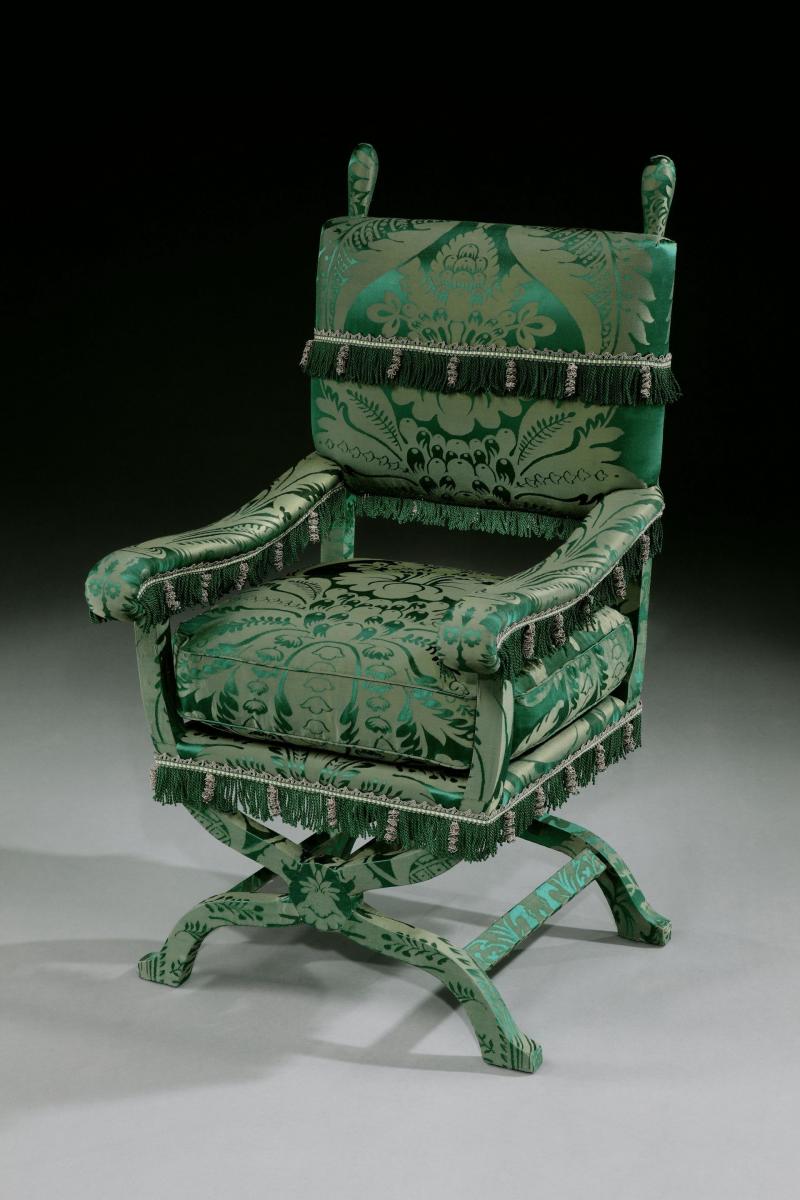
This object is eligible for a Certificate of BADA Provenance
The BADA Standard
- Since 1918, BADA has been the leading association for the antiques and fine art trade
- Members are elected for their knowledge, integrity and quality of stock
- Our clients are protected by BADA’s code of conduct
- Our dealers’ membership is reviewed and renewed annually
- Bada.org is a non-profit site: clients deal directly with members and they pay no hidden fees
A 19th century ‘ X ‘ chair, re-upholstered in a green, silk damask brocaded with gold thread, rewoven by Rubelli from their archive material.
Reputedly from the collection of Sir Charles Lawes Wittewrong, Rothamsted Park
This was the first model of upholstered chair first recorded in 1466, and enormous expense was lavished on the silk or velvet upholstery. It was a chair of state and confined to Royal Palaces and a few Great Houses where it would have been in a room of state. This chair is upholstered in a lavish, green silk damask brocaded with gold threat and traditionally embellished with bullion fringe.
The ‘X’ chair evolved in the late-15th/early-16th century. In the Ewelme Inventory of 1466 the Dukes of Suffolk travelled to Oxfordshire with ‘a chaire of tymbre of astate covered w blue cloth of gold and panells of copper..a case of lether thereto’ in which the chair would have been packed. The woodwok on ‘X’ was completely covered with silk or velvet, the seat consisting of loose cushions resting on webbing and were confined to Royal Palaces and a few Great Houses.
The more important of Henry VIII’s embroidered chairs were of this type and they are represented in portraits of the age. Cardinal Wolsey’s standard of luxury exceeded that of other courtiers and in his inventory a large number of these upholstered chairs are noted.
Early into Elizabeth’s reign the Royal coffer-maker William Green supplied the Crown with the frames for a number of ‘X’ chairs and provided the coverings of gold, velvet and other rich fabrics trimmed with fringes and secured with copper nails on which enormous sums were expended.
Towards the end of the Elizabethan period richly upholstered ‘X’ chairs were supplied by coffer makers and became fashionable in great establishments rivaling continental standards of luxury in furnishings. When an inventory was taken in 1583 at Kenilworth castle a number of chairs of this type were among the furniture in the possession of the Earl of Leicester, Robert Dudley.
Although their position was not recorded, it can be assumed that they were in a room of state : ‘ A chaire of crimson velvet, the seate and back partlie embrothered with R.L in clothe of gold and the beare and ragged staffe in clothe of silver garnished wtihe lace and studded with gilt nailes. This chair was probably of ‘X’form.
Nearly all the chairs at Hardwick Hall in 1600 were upholstered in similar splendour. These richly upholstered ‘X’ chairs supplied to the Royal Palaces under Elizabeth continued to be made in the early-17th century but Knole Park in Kent is the only place where they survive.
There are four ‘X chairs at Knole, one upholstered in red satin with appliqué patterns of ‘cloth of gold’ and silver spangles, another in crimson velvet, another in crimson with a gold and silver pattern and the fourth in a white ground embroidered with gold and silver threads.
After his execution, the inventory of Charles I describes a number of chairs of this type. In the portrait by Edward Bower representing Charles I at his trial the King is seated in am armchair resembling Juxon’s illustrated above.
RUBELLI
The Rubelli historical archive, housed in the celebrated Renaissance palazzo Ca’ Corner Spinelli, is a collection of over 6000 textile records which can be dated from the end of the fifteenth century to the first half of the twentieth century.
The collection was begun in the second half of the nineteenth century, as the company was being set up and at a time when Venice was undergoing a cultural and economic recovery aimed at reviving traditional crafts, fully in line with the eclectic and revivalist trend in Europe.
For more than one hundred years the collection expanded considerably with the addition of important textile documentation and includes today not only European fabrics but also specimens from the East, Africa and the Americas.
The collection also carefully conserves examples from original and historic Rubelli production, including the velvet made for the royal family in the early twentieth century and a number of fabrics produced through a creative partnership with famous artists, architects and designers such as Vittorio Zecchin, Bruno Cadorin, Giò Ponti and Alfredo Carnelutti.
The fabrics in the Rubelli archive represent in fact a matchless source of creative ideas for the new collections, also offering an excellent starting point for the creation of exclusive fabrics according to specific customer requirements.
The function of the archive as an essential aid is also seen in the preliminary research that precedes reconstruction of specimens of ancient textiles that once belonged to historical residences, embassies, museums and cultural institutions in all corners of the world.
The Venetian, silk damask is in the most prized and expensive colour of the late-17th century, ‘blue’, brocaded with gold thread. Until the invention of Prussian Blue in the first decade of the 18th Century, a very good fast blue dye could only be made from lapis lazuli, which was extremely expensive.
The colour of the silk changes with the intensity of light and appears peacock green in very little light similar to the image below. I can provide a sample of the silk to illustrate this.
Provenance
This ‘X’ chair was purchased together with a State Bed, from a pirvate collector in the United States. They have reputedly come from the collection of Sir Charles Lawes Wittewronge, Rothamsted Park.
Dimensions
Back Height including finials 123 cm., 48 ½ in., Seat Height 55 cm., 21 ½ in., Width 66 cm., 26 in, Depth 64 cm, 25 in.The BADA Standard
- Since 1918, BADA has been the leading association for the antiques and fine art trade
- Members are elected for their knowledge, integrity and quality of stock
- Our clients are protected by BADA’s code of conduct
- Our dealers’ membership is reviewed and renewed annually
- Bada.org is a non-profit site: clients deal directly with members and they pay no hidden fees


